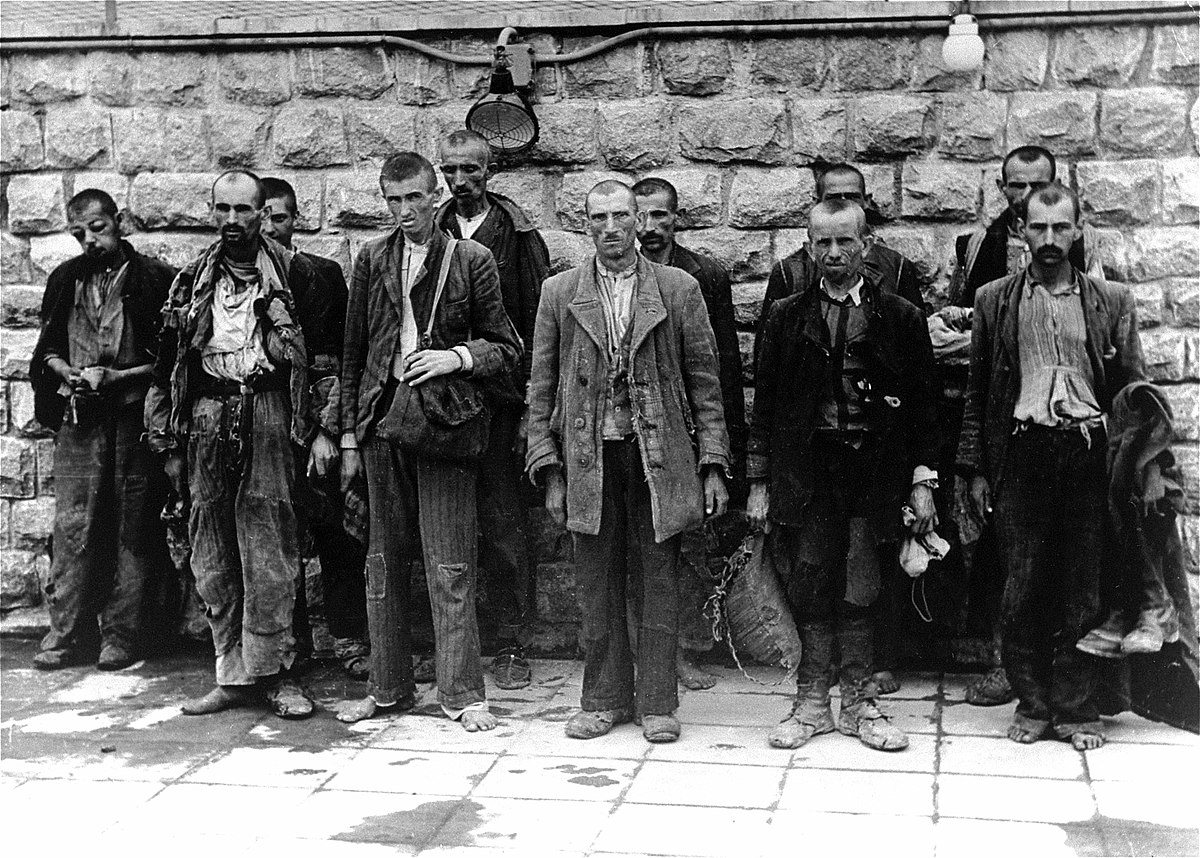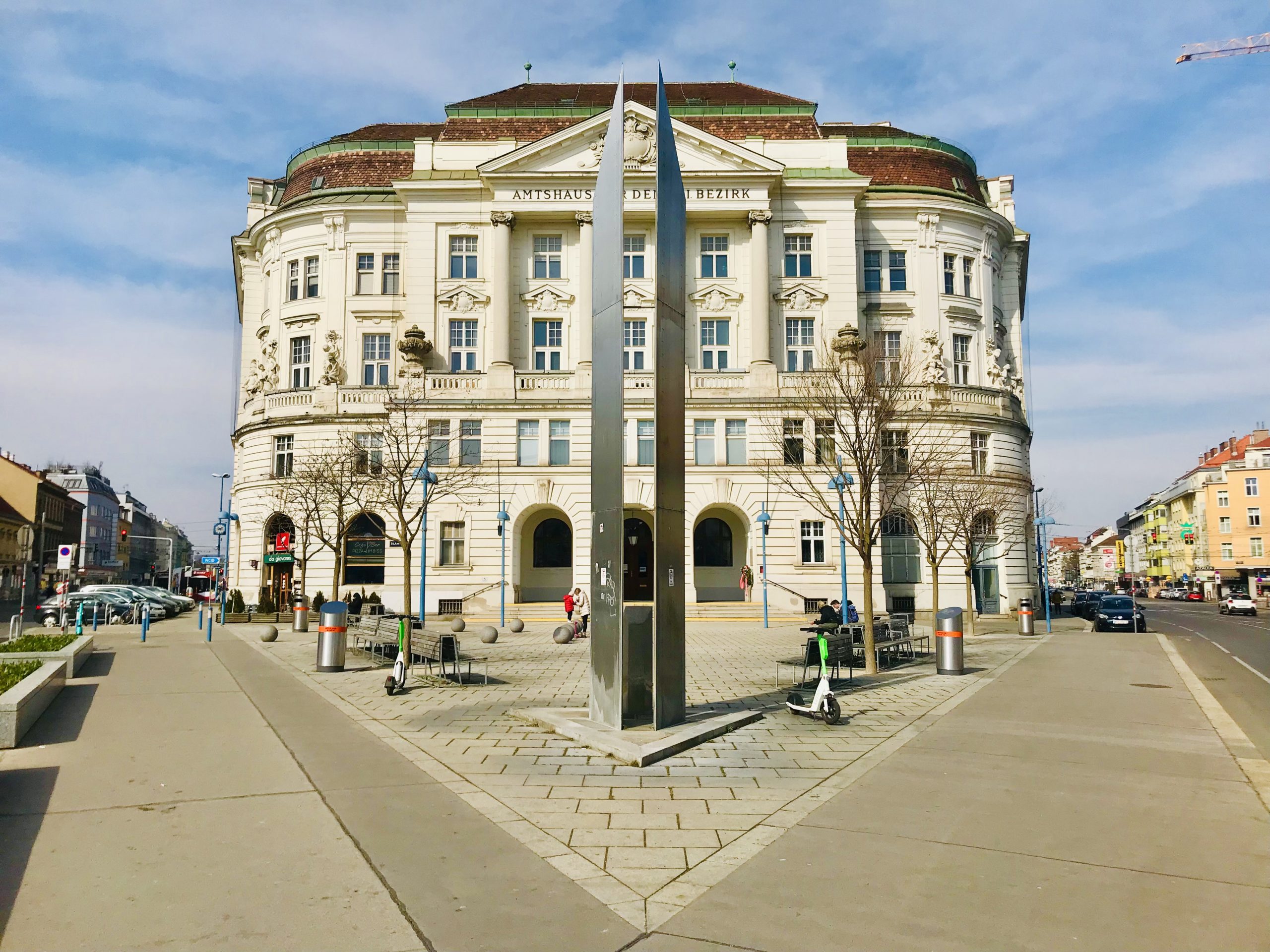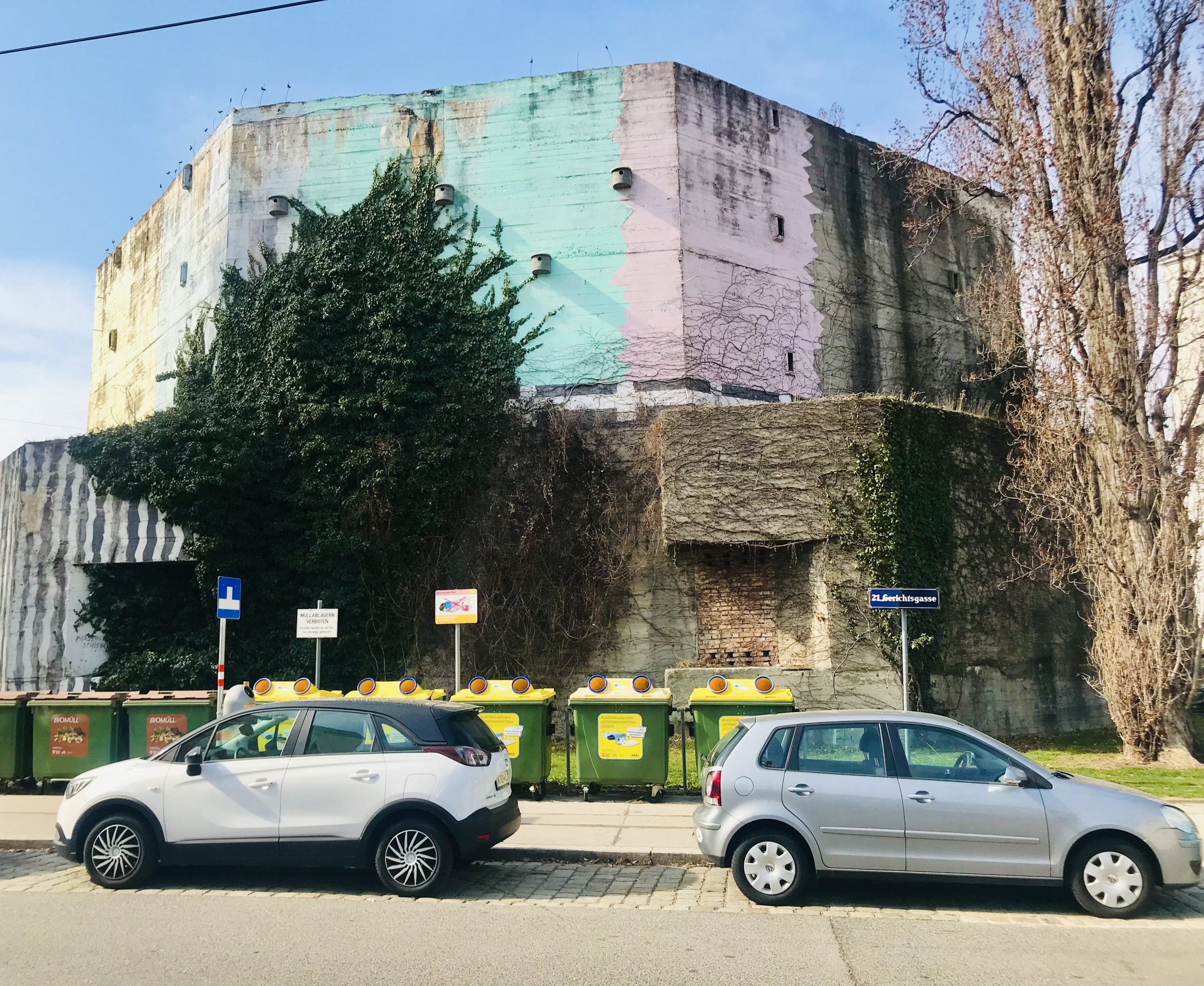WALKING TOURS: IN THE FOOTSTEPS OF EVIL
- (2) Walking Tours: Learn about Hitler’s early days in Vienna and the WW2 years.
- Discover places not/not on tourist maps.
- Explore our other Walking Tour: VIENNA AND THE HOLOCAUST: TRAGEDY AND JUSTICE.

Rejection in a cultural capital molded the views of a fanatical psychopathic tyrant.
Although Adolf Hitler was born in the western Austrian town of Linz, his time in Vienna as an early adult molded his thinking and motivations throughout his life. Dreaming of becoming an artist, Hitler faced rejection, poverty and failure in Vienna. Hitler’s negative experiences in Vienna drove him to make a name for himself — at any expense. Hitler vowed that someday he would return to Vienna in triumph.
EARLY DAYS (1905)
Adolf Hitler was born on 20 April 1889. Hitler’s oppressive father Alois was a harsh disciplinarian and beat him mercilessly as a child. His mother Klara was loving but extremely overprotective. A narcissist with an inflated ego, Hitler exuded self importance even if he wasn’t. Hitler loved an audience, hated being corrected, and was on transmit mode when it came to his relationships with others. In 1905, Hitler dropped out of high school at age 16.

BIRTHPLACE
Salzburger Vorstadt 15, Brunau Am Inn, Linz
48°15’13.80″ N 13°02’6.00″ E
Hitler’s parents occupied the top floor apartment until he was three years old. After almost being torn down, the home was converted into a Police Station in 2017. A monument reads “For Peace, Freedom and Democracy. Never Again Fascism. Millions of Dead Remind [us]”.
SECOND REJECTION FROM ART SCHOOL (1908)
In February 1908, Hitler permanently relocated to Vienna ready to pursue his career as an artist. Hitler was accompanied by his childhood friend August Kubizek, who planned to apply to the Vienna Conservatory of Music. The two resided at Stumpergasse 31, Apt.17 near the fashionable Mariahilferstrasse shopping district. Hitler dressed fashionably, routinely attended performances with Kubizek at the Vienna State Opera House, the Vienna Stadttheater, the Burg Theater and the Burgkappelle Chapel and frequented local cafes. Between February – October, when the next entrance exam was held, Hitler burned through his inheritance. With his inflated ego, he had no intention of getting a regular job as he was far above that. During this period, Kubizek described Hitler as a “night owl who woke in the early afternoon.” Hitler would take walks during the day, then stay up late discussing his ideas with Kubizek on everything from social reform to city planning.

VIENNA STATE OPERA HOUSE
Opernring 2
48°12’09.8″N 16°22’07.8″E
In May 1906, a seventeen-year-old Adolf Hitler attended his first performance at the Vienna State Opera House called Tristan and Flying Dutchman. The Opera House would become a regular fixture for Hitler throughout his time in Vienna. Accompanied by his childhood friend August Kubizek, he particularly enjoyed performances celebrating German mythology, history and culture. On March 12, 1945, the Opera House was severely damaged during the Allied bombing of Vienna.

VIENNA STADTTHEATER (RONACHER THEATER)
Seilerstätte 9
48°12’18.7″N 16°22’30.1″E
In May 1906, Hitler sent a postcard to his friend August Kubizek advising that he had attended a performance of Remorse of Conscience, a comedy by Ludwig Anzengruber focused on rural life.

BURG THEATER
Universitätsring 2
48°12’37.1″N 16°21’41.4″E
Hitler routinely attended performances at the Burg Theater until his departure from Vienna in 1913.In April 1908, Hitler and his friend August Kubizek attended a performance of Faust by Goethe. On March 12, 1945, the building of the theater was seriously damaged during Allied bombings of Vienna.

BURGKAPELLE CHAPEL
Hofburg Palace
48°12’24.7″N 16°21’56.9″E
On Sundays in 1908, Hitler and his friend August Kubizek attended musical performances of the Vienna Choir Boys in the Burgkapelle Chapel in the courtyard behind the Hofburg imperial palace.
During this period, Kubizek recalled that Hitler was increasingly unstable and had a terrible temper. Although he could be quite reasonable, at other times he had incredible mood swings. Hitler was prone to sudden outbursts of rage especially when he was corrected. Quite shy, Hitler had no real interest in women, preferring to keep away from them and smugly rebuffing those who showed any interest in him. Hitler was also prone to sudden bursts of inspiration. Although he had many grand ideas he enthusiastically started, he would typically lose interest and never see anything to completion. In September 1908, Hitler tried for a second time to gain admission to the Academy. This time, his test drawings were evaluated as being so poor he was not even allowed to take the formal entrance exam.

APARTMENT SHARED WITH AUGUST KUBIZEK
Stumpergasse 31, Apt. 17
48°11’36.8″N 16°20’40.7″E
From February – November 1908, Hitler shared a small apartment with his childhood friend August Kubizek. After being rejected from the Academy, Hitler departed with no forwarding address and temporarily became homeless
DOWNWARD SPIRAL (NOVEMBER 1908 – SEPTEMBER 1909)
This second failure was an incredible blow to Hitler’s ego. Disappointed, defeated and depressed, Hitler deeply resented Kubizek’s successful admission into the Vienna Conservatory. In November 1908, when Kubizek returned to Vienna after compulsory military training in Linz, Hitler was gone without a trace and left no forwarding address. Hitler continued his psychological spiral downward, living by himself and moving from place to place as his savings rapidly dwindled. In November 1908, according to police records, Hitler was registered as a “student” at a boarding house at Felberstrasse 22, Room 16 near the Westbahnhof train station. During this period, Hitler was known to have frequented the nearby Cafe Kubata where he apparently had a love interest named “Emilie.” Hitler remained at this address until August 1909 when his finances became critical. He then relocated to another boarding house at Sechshauserstrasse 56.

BOARDING HOUSE
Felberstrasse 22, Room 16
48°11’50.1″N 16°20’02.1″E
From November 1908 – August 1909, Hitler registered as a “student” at his address near the Westbahnhof train station. Hitler frequented the nearby Cafe Kubata where he likely had a love interest named “Emilie.”
EVICTED (SEPTEMBER 1909)
From 21 August – September 1909, Hitler was registered with the police department as a “writer” at Sechshauserstrasse 56, 2nd Floor, Room 21. At this stage, he had completely depleted his personal savings and relied entirely on assistance from the State (receiving a small stipend as an orphan). On 16 September 1909, Hitler was evicted after not paying his rent.

EVICTED
Sechshauserstrasse 56, 2nd Floor, Room 21
48°11’14.6″N 16°19’48.3″E
From 21 August – September 1909, Hitler was registered as a “writer” at this address. He had depleted his finances and relied entirely on assistance from the State. After not paying his rent, he was evicted.
HOMELESS (SEPTEMBER 1909 – FEBRUARY 1910)
In September 1909, Hitler departed Sechshauserstrasse 56 without a trace and roamed the city as a vagabond for three months until November 1909. Hitler slept the benches at the Prater amusement park and found refuge in homeless shelters and train stations. In describing this period of his life, Hitler stated, “even now I shudder when I think of these pitiful dens, the shelters and lodging houses, those sinister pictures of dirt and repugnant filth and worse still.” Desperate, Hitler had to pawn his art materials and his clothing. Although needing a regular income, Hitler made no effort to seek a paying job — it was beneath him. He found his meals at a soup kitchen operated by the nuns from the Sisters of Mercy Hospital at Stumpergasse 13. Defeated, he reportedly worked odd jobs as a day laborer, shoveling snow and carrying bags at the train station. In November 1909, Hitler took refuge in the Meidling Homeless Shelter at Kastanienallee 2. Hitler had hit rock bottom.

SISTERS OF MERCY HOSPITAL
Stumpergasse 13
48°11’32.6″N 16°20’45.4″E
From September – November 1909, a destitute Hitler received handouts of free soup and bread from the nuns at the hospital.

MEIDLING HOMELESS SHELTER
Kastanienallee 2
48°10’18.1″N 16°20’28.1″E
From November 1909 – February 1910, Hitler was a resident of this homeless shelter. He was afforded a daily shower, free food, medical care and even overnight stays.
WATERCOLORS (FEBRUARY 1910 – MAY 1913)
During the early days of 1910, Hitler was to meet an individual named Reinhold Hanisch, who would have a profound impact on him. By 1909, Hanisch had already served two times in prison for theft and forgery of documents. He rotated from shelter to shelter providing different personal details to each. Hanisch saw profits in Hitler’s artistic talents and set about helping him commercialize his work. Under Hanisch’s direction as his agent, Hitler began creating small oil and watercolor paintings that he replicated from images on postcards. Hitler claimed to have produced as many as three paintings a day. Hanisch peddled the works to hotels and cafes throughout Vienna as well as to tourists and frame sellers. As their small enterprise took off, Hitler and Hanisch used their small profits to relocate to the Mannerheim Hostel for Men. Hitler could finally generate income for himself from his paintings. Hitler would spend the next three years at Mannerheim until his departure from Vienna to Munich on 24 May 1913.
Hitler focused his efforts on drawing popular places in Vienna and gradually developed a customer base. All earnings were shared with Hanisch 50/50. As one would expect, in the summer of 1910, Hitler and Hanisch had a falling out. Hitler became lazy and disinterested in painting and was unhappy with the agreement he and Hanisch shared. In early August 1910, Hitler’s new partner Siegfried Loffner, a postcard salesman, reported Hanisch to the police, accusing him of stealing paintings and money from Hitler. Hitler falsely testified against Hanisch in court — Hanisch received an eight-day jail sentence. (In 1938, Reinhold Hanisch was murdered on Hitler’s order after speaking to the press about his impressions of the early days with Hitler in Vienna). With Hanisch out of the picture, Hitler began working with a Jewish friend Josef Neumann to sell his paintings to Jewish shop owners. Interestingly, in September 1910, Hitler gave the Academy a third effort. Although he met with an administrator and brought examples of his work, he was still denied entrance to the Academy.
From 1911-1912, Samuel Morgenstern, an Austrian businessman and a business partner of the young Hitler in his Vienna period, bought many of his paintings. Morgenstern maintained a database of his clientele in his store at Liechtensteinstraße 4, through which it had been possible to locate the buyers of young Hitler’s artwork. According to Morgenstern, the majority of the buyers were Jewish. Morgenstern, who was Jewish, recommended Hitler to other Jews, who then made private orders directly. In 1938, members of the Nazi Party found several original paintings made by Adolf Hitler in the Morgenstern’s store. On August 10, 1939, Morgenstern wrote a letter to Adolf Hitler personally, asking for his help in preventing the forced removal of property. Although the letter made its way to Berchtesgaden and to the Chancellery in Berlin, the letter never reached Hitler. Of note, Morgenstern’s letter was discovered only half a century later in the Nazi archives. Ultimately, The man who helped Hitler survive by selling his art work was deported from Vienna in October 1941 and was sent to the ghetto in Lodz, Poland where he would die of starvation. Today, the site of Morgernstern’s store at Liechtensteinstraße 4 is occupied by Deutsche Bank.
Hitler had a passion for reading and would monopolize the daily newspapers at the men’s home. He would sit in the non-smoking lounge reading political pamphlets and books on German history and mythology. He took an interest in the philosophical works of Nietzsche, Hegel, Fichte, Treitschke and Houston Stewart Chamberlain. In the future, Hitler would draw on these philosophers to form his own racist, nationalistic, anti-Semitic attitudes. Living in poverty deeply influenced Hitler. He adopted a harsh, survivalist mentality, which left little room for kindness and compassion. Referring to his time in Vienna, Hitler wrote, “I owe it to that period that I grew hard and am still capable of being hard.”

MANNERHEIM DORMITORY FOR MEN
Meldmannstrasse 27
48°14’21.4″N 16°22’43.5″E
From 9 February 1910 – 24 May 1913, Hitler made the Mannerheim his home. After receiving art supplies in the mail from his Aunt Johanna, Hitler would utilize a large oak table in the non-smoking reading room to create his paintings. The table was near a window that provided the natural light Hitler desired. Hitler soon realized which local sights were in high demand to buyers.
SHAPING HIS POLITICS
In 1910, at age 21, Hitler was becoming keenly interested in politics, after having witnessed a large protest march by laborers in Vienna. He was impressed by the workers’ ability to organize such a large rally. Vienna had a Jewish population of just under two hundred thousand. Among the middle class in Vienna, anti-Semitism was considered rather fashionable. The mayor of Vienna, Karl Lueger, professed anti-semitism in his speeches and views. Hitler admired Lueger, a powerful politician, for his public speaking skills and for his effective use of propaganda. He also admired Lueger’s skill in manipulating established institutions such as the Catholic Church. He studied Lueger carefully and modeled some of his future behaviors after what he had observed.
CAFE CULTURE
1913 was a crazy year for cafe culture in Vienna. On any given day, one could find Adolf Hitler, Leon Trotsky, Iosif Vissarionovich Dzhugashvili (Josef Stalin AKA Coba), Josip Boz (Marshall Tito), and Sigmund Freud enjoying coffee at the Cafe Central. In fact, Trotsky and Stalin were known to engage daily in a game of chess. It would seem that Cafe Central was an epicenter for the sculpting of world events, especially revolutions. Coincidence?

CAFE CENTRAL
Herrengasse 14
48°12’37.4″N 16°21’55.8″E
1913 was a special year at Cafe Central, one of Hitler’s favorite haunts in the city. On any given day, one could find Hitler sipping coffee and Leon Trotsky engaging Josef Stalin in a game of chess. Other famous coffee drinkers included Tito and Sigmund Freud.
DEPARTURE (24 MAY 1913)
Hitler left Vienna at age 24, to avoid mandatory military service in the Austrian army. But he was tracked down by the Austrian authorities in January 1914. Faced with the possibility of prison for avoiding military service, he wrote a letter to the Austrian Consulate apologizing and told of his recent years of misery. “I never knew the beautiful word youth,” Hitler stated in his letter. The sincere tone of the letter impressed the Austrian officials and Hitler was not punished. He took the necessary medical exam which he easily failed and the matter was dropped altogether.

WIMBERGER RESTAURANT AND HOTEL
Neubaugürtel 34-36
48°12’01.8″N 16°20’18.9″E
In 1910, Hitler attended several speeches by Karl Hermann Wolf, a well-known anti-semitic speaker who was the leader of the German Radical Party and an idol of Hitler’s. Currently the Arcotel, the interior of the restaurant, which is located on the ground floor, has not changed since 1871.
ANSCHLUSS
Adolf Hitler triumphantly returned to Vienna on 15 March 1938 following the Anschluss, the German annexation of Austria. He waved to the crowd with from his balcony at the Hotel Imperial joined by Propaganda Minister Joseph Goebbels, and then delivered a speech from the balcony. His parade progressed along the boulevard around the Ringstrasse, passing the dissolved parliament before stopping at the Hofburg Palace, where the Habsburg emperors once lived. From the balcony of the Neue Berg wing, Hitler addressed 250,000 jubilant Viennese gathered before him in the Heldenplatz. Hitler would spend only 24 hours in Vienna before returning to Berlin. When he departed, Vienna had become a provincial capital of the Third Reich.

HOTEL IMPERIAL
Kärntner Ring 16
48°12’04.3″N 16°22’23.3″E
In March 1938, Hitler waved to the crowd from his apartment balcony located directly above the main hotel entrance. Hitler’s mistress Eva Braun, who was unknown to the German people, occupied the room next to Hitler’s.

HELDENPLATZ
48.2015° N, 16.3652° E
Following the Anschluss in March 1938, Hitler delivered his welcoming speech to 250,000 plus Viennese who had assembled along the parade route and in the Heldenplatz. Hitler gave the speech from the balcony of the Neue Berg wing of the Habsburg Palace. Today, the Government of Austria has banned any/all speeches from this balcony.

RATHAUS
Friedrich-Schmidt-Platz 1
48°12’38.7″N 16°21’29.9″E
In April 1938, Hitler returned to Vienna and addressed a massive crowd of Viennese from a platform constructed in front of the Rathaus.
THE “ADOLF HITLER HOUSE”
In 1931, the Viennese Nazi party (NSDAP) purchased a three story building at Simon-Denk-Gasse 11. After the Anschluss in the spring of 1938, the Nazis created the false narrative that Hitler resided at this residence during his time in Vienna and therefore could not have been a homeless vagabond. His addresses of Stumpergasse 31, Felberstrasse 22 and Sechshauserstrasse 58 were completely excluded from his history. Today, the Austrian Ministry of Education, Art and Culture uses the building as a youth hostel.

THE “ADOLF HITLER HOUSE”
Simon-Denk-Gasse 11
48°13’35.2″N 16°21’33.3″E
To erase Hitler’s vagabond past, the Nazi party created a false narrative that Simon-Denk-Gasse 11 was Hitler’s residence during his early years in Vienna.
AFTER THE WAR
Although the Nazis destroyed a considerable amount of Hitler’s pre-war artwork in an effort to erase and redefine his past, a number of his paintings were seized by the US. Army at the end of World War II. These paintings, stored at the Army Center of Military History, have never been exhibited in public. Other paintings were kept by private individuals. In the 2000s, a number of these works appeared at auctions. In 2009, British auction house Mullock’s of Shropshire sold 15 of Hitler’s oil and watercolor paintings USD 143,358, while Ludlow’s of Shropshire sold 13 works for over USD 120,000. In a 2012 auction held in Slovakia, a mixed-media painting sold for USD 35,000. And in November 2014, a watercolor by Hitler of the old registry office in Munich sold for USD 140,000 at an auction in Nuremberg. In early 2019, several paintings failed to spark interest at auction and were deemed of “having no artistic value.”
A group of scholars estimates that there are only 300 completed works by Hitler. Hitler stated that while in Vienna, he produced around two or three paintings a day. Hitler said in the six years he spent in Vienna and Munich, from 1908-1914, he produced over a thousand paintings. In 1936, Hitler appointed Schulte Stratthaus to locate and buy paintings Hitler had painted from 1907-1912 and 1921-1922. Stratthaus assigned Peter Jahn with the task. Jahn spent nearly four years tracking down Hitler’s early works, until he became the Art Consultant to the German Embassy in Vienna in 1937, where he would then search for, purchase and collect individual pieces of Hitler’s art, in order to allegedly destroy a majority of the paintings. Jahn sold one of the largest collections of Hitler’s art, about 18 pieces, with an average selling price of USD 50,000.

Vienna State Opera House
Painting by Hitler
AUGUST KUBIZEK
Whatever happened to Hitler’s childhood friend August Kubizek? In 1933, August Kubizek attempted to contact Hitler to congratulate him on having become the Chancellor of Germany. Kubizek received an unexpected reply from Hitler, who wrote to his old friend “Gustl” saying, “I should be very glad… to revive once more with you those memories of the best years of my life.” After 30 years, the two friends were reunited on 9 April 1938 during one of Hitler’s visits to Linz. Hitler and Kubizek spoke two spoke for over an hour at the Hotel Weinzinger and Hitler offered Kubizek the conductorship of an orchestra, which Kubizek politely refused. Upon learning of his friend’s three sons, Hitler insisted on financing their educations at the Anton Bruckner Conservatory in Linz. In 1939 and 1940, Hitler later invited Kubizek to attend the Bayreuth festival. In December 1945, Kubizek gathered the collection of keepsakes given to him by Hitler during their youth and concealed them carefully in the basement of his house. He was arrested by the U.S. Army and held at Glasenbach, where he was imprisoned and interrogated. His home was searched, but the Hitler correspondence and drawings were never found. In 1951, Kubizek, who had rejected other post-war offers for his memoirs, agreed to publish a book detailing his early years in Vienna with Hitler.
WALKING MAP #1: HITLER IN VIENNA – THE EARLY YEARS
WALKING MAP #2: HITLER IN VIENNA – THE WW2 YEARS
CLICK MAP TO OPEN / DOWNLOAD
IF YOU LIKED THIS ARTICLE… CHECK OUT OUR SELF-GUIDED WALKING TOUR BELOW:

Learn the compelling story of Vienna’s Jews — who were the first victims of the Holocaust. During this Self-Guided Walking Tour, you will explore the city of Vienna. You will learn about the “tragedy and justice” of the Holocaust through people, places, and events. In doing so, you will discover key historical locations that are not on popular tourist maps.
START TOUR
RELATED ARTICLES
ACCOMMODATION
SO/ VIENNA. Designed by the famous architect Jean Nouvel, this stylish hotel is near all of the sites. Panoramic views over Vienna, a gourmet restaurant, a gym, and FREE spa facilities. Modern, spacious rooms with air conditioning, FREE mini-bar, and FREE Wifi. ADDRESS: Praterstraße 1, 02. Leopoldstadt, 1020 Vienna, Austria
RUBY LISSI HOTEL VIENNA. Boutique hotel located in an 18th-century building in Vienna’s first district. Luxuriously furnished rooms with air conditioning, wooden floors, use of tablet device and FREE Wifi. Each room has a Marshall amplifier and guitars can be rented. Organic breakfast and 24/7 access to Italian antipasti and snacks, beverages and selected wines. ADDRESS: Fleischmarkt 19 / Laurenzerberg 2, 01. Innere Stadt, 1010 Vienna, Austria.
GRAND FERDINAND VIENNA. Opened in autumn 2015, located on the Ringstraße boulevard in the center of Vienna. Modern spacious rooms with air conditioning. Rooftop pool, 3 restaurants, fitness center, and FREE Wifi. ADDRESS: Schubertring 10-12, 01. Innere Stadt, 1010 Vienna, Austria
LE MERIDIEN VIENNA. Located on the Ringstraße in the heart of Vienna. Modern, spacious rooms with amenities. Indoor pool, spa facilities, fitness center, FREE mini-bar, and FREE Wifi. ADDRESS: Robert-Stolz-Platz 1, 01. Innere Stadt, 1010 Vienna, Austria
DO&CO HOTEL VIENNA. Steps away from St. Stephen’s Cathedral in the heart of Vienna, this elegant hotel features spacious and stylish rooms with modern furnishings, wooden floors, air conditioning, and FREE Wifi. FREE use of neighborhood fitness center. ADDRESS: Stephansplatz 12, 01. Innere Stadt, 1010 Vienna, Austria
BOOKSHELF
Hitler: A Biography by Ian Kershaw
Hitler’s Vienna: A Dictator’s Apprenticeship by Brigitte Hamann
Hitler in Vienna, 1907-1913: Clues to the Future by J. Sydney Jones
REFERENCES
History Place: The Rise of Hitler
Vienna Philharmonic’s Nazi past detailed
Vienna-Unwrapped: Uncovering the Fuhrer and Nazi Vienna
War Documentary: Adolf Hitler in Vienna from 1906-1913
1913: When Hitler, Trotsky, Tito, Freud, and Stalin all lived in the same place
















